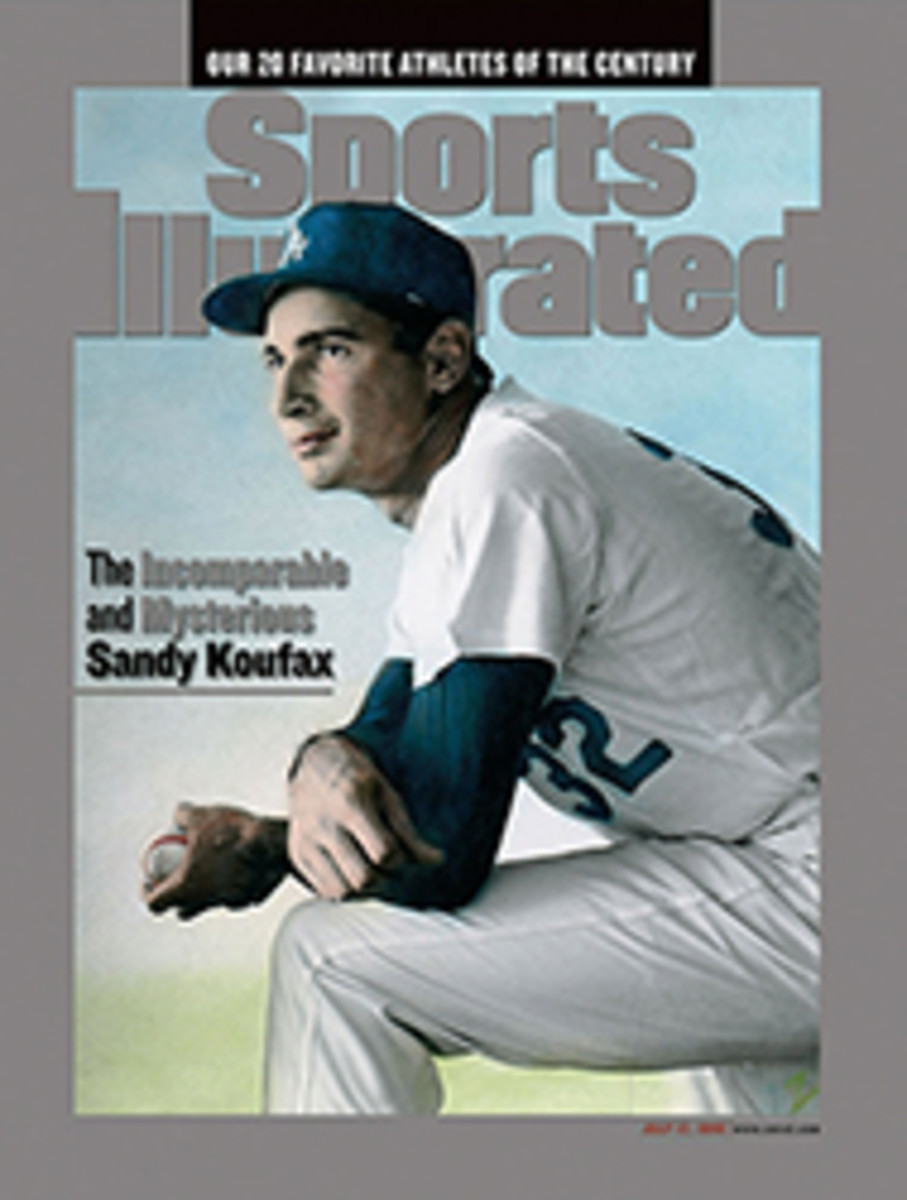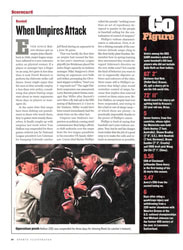
Midsummer Snooze Does the All-Star Game matter anymore?
It's getting harder to remember when the All-Star Game really
meant something. With the annual roll-up to the midseason break,
you get the feeling that the chance for three days off matters
more to the participants than the game itself. Whitey Herzog
once said, "The only bad thing about winning the pennant is that
you have to manage the All-Star Game the next year." Which,
apparently, is even worse than having to play in it or watch it.
Does anyone over the age of nine really care about the game
anymore?
We certainly used to. All-Star Game lore resides on the top
shelf of blessed memory: Carl Hubbell striking out five straight
future Hall of Famers in 1934, Ted Williams launching Rip
Sewell's blooper pitch toward Venus in '46, Stu Miller getting
blown off the mound by the Candlestick Park winds in '61. The
game was a capital-E Event, the pivot point of the entire
season. The selection of the lineups was itself annual cause for
raging controversy.
Never was this clearer than in 1957, when the process became
front-page news. With the civic boosterism that newspapers used
to love to wallow in, the Cincinnati Times-Star daily printed an
All-Star ballot bearing the exhortation VOTE OFTEN--VOTE EARLY.
(This was long before the punch cards that now share space with
spilled beer and peanut shells beneath every seat in every major
league stadium.) And, it urged, LET'S BACK THE REDLEGS.
Cincinnatians rose to the occasion in a spasm of ballot-box
stuffing that placed seven local heroes in the eight National
League starting positions chosen by the fans. As alarmed as any
political boss who doesn't like the outcome of an election he's
supposed to control, commissioner Ford Frick voided the
selection of Cincinnati outfielders Gus Bell and Wally Post, and
sent to St. Louis in their place a couple of guys named Mays and
Aaron. This, in turn, led an inflamed citizenry in Cincinnati to
drag an effigy of Frick around town, threaten a lawsuit and
loudly decry the commissioner's "Soviet tactics"--perfectly
appropriate in that nervous cold war period when the Reds had
actually been renamed the Redlegs, lest anyone mistake their
loyalties.
It's difficult to imagine a whole city getting caught up in such
a campaign now. Today, the All-Star Game is pale, incidental,
missable. The old motivation for the players--stocking their
pension fund, the traditional beneficiary of the game's
receipts--hardly inspires men who make enough money in one year
to last a lifetime. For the fans, interleague play and the
ubiquity of superstation baseball have punctured the novelty of
seeing the other league's stars. And the requirement that every
franchise be represented on its league's All-Star roster may
have had its virtues when there were only 16 major league teams,
but a soup that has to be stocked from 30 sources gets pretty
thin.
Or if you prefer a different food comparison, there's the
damning-with-faint-praise one suggested by third baseman Gary
Gaetti when he was asked in 1988 to summarize the thrill of
playing in his first All-Star Game: "It's right up there with
lobster."
B/W PHOTO: ART SHAY/TIME In '57 Cincinnatians stuffed the ballot box to send (from left) Ed Bailey, Don Hoak, Frank Robinson, Roy McMillan and Johnny Temple to the All-Star team.

